Build a Solo Bitcoin Mining Node with Umbrel and DATUM Gateway
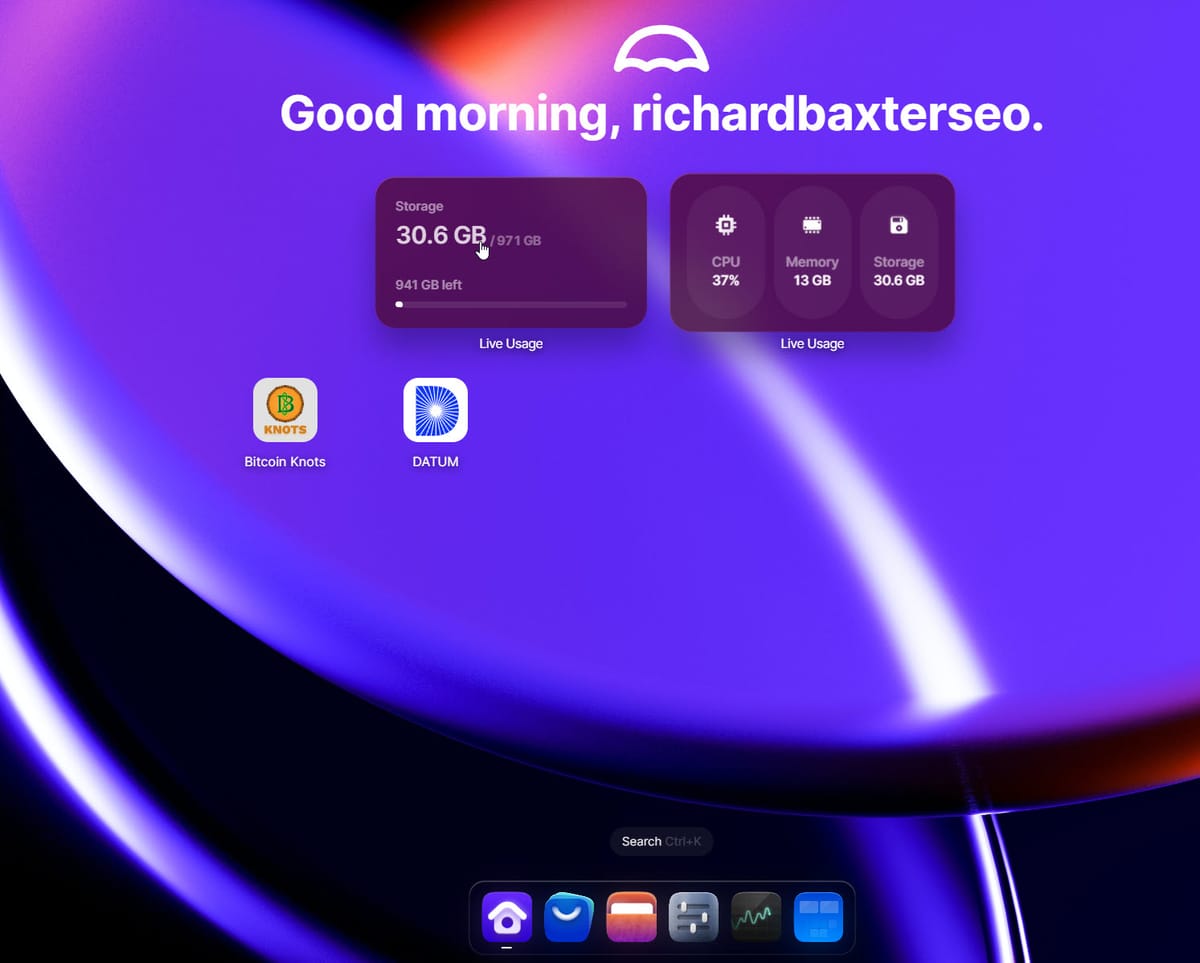
I recently completed a journey of setting up my own solo mining "operation" - that's 11TH/s worth of Tinychiphub's Supra solo miners, just to manage expectations.
I use an Umbrel with Bitcoin Knots as the node and DATUM as the Gateway.
I haven't really found a guide that is particularly straightforward if you're new to SOLO BTC mining, and, in reality, involved a few small, unexpected challenges that I think are worth sharing.
Why Solo Mine?
Before getting into the technical details, it's worth addressing why you might want to set up your own mining node:
- Network Latency: The fastest Stratum server response I could find from the UK was EU CKpool. This had a Stratum Ping (not to be confused with a simple network Ping) latency of around ~24ms. That is very good, but poor by comparison to the latency I have to a node on my own network!
- Complete independence: No reliance on mining pools (except as a fallback I still fall back to the fastest pool I can find).
- Full rewards: If you do find a block (admittedly a rare event), you receive the entire 3.125 BTC plus transaction fees - no pool commission
- Learning opportunity: Understanding Bitcoin's inner workings at a deeper level is cool - making something like this work is cool, setting up the network is cool.
Initial Setup: The Umbrel Node
My journey began with a fresh PC that needed an operating system. I chose Umbrel (for the sake of simplicity, more than anything else).
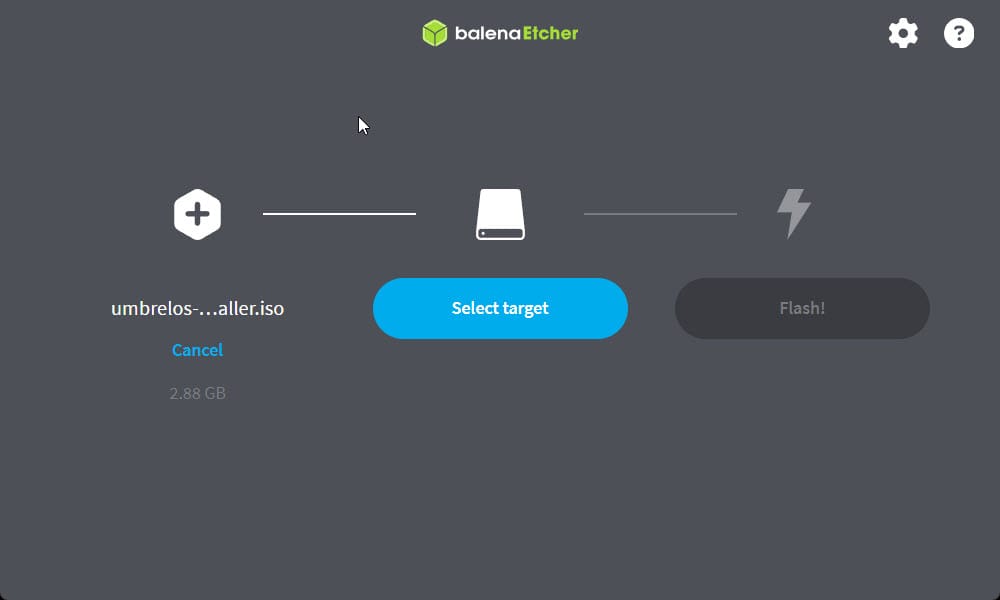
Here's where you'll find the latest Umbrel iso: https://github.com/getumbrel/umbrel/wiki/Install-umbrelOS-on-x86-systems
An important point: a lot of installation documentation implies you need to install Linux and then Umbrel. This has not been the case for some time - Umbrel is an OS based on Debian and will install from a bootable USB.
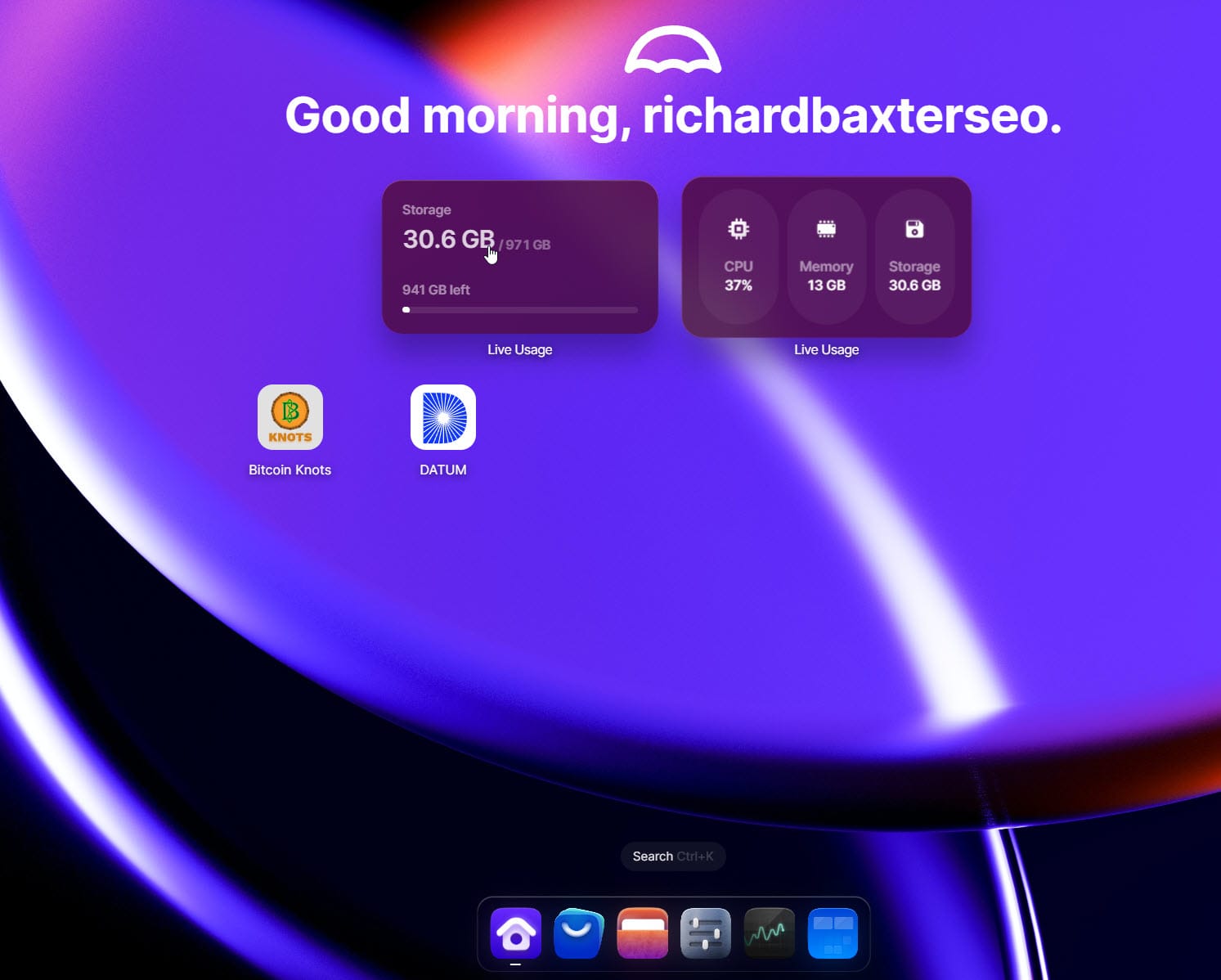
Installation is easy. For Umbrel, you let the installation run and remove your USB stick at the prompt, ready to reboot. If you've ever installed anything from an ISO file, you'll find this incredibly easy.
By default, Umbrel OS will be visible on your network at http://umbrel.
You'll be prompted to setup a user account and password and, if I may, set up 2FA on the OS too - it's going to have some incoming network traffic from BTC node peers, you'll want to make sure you're secure.
Much like most OS's, there's a explorer icon that will open the app store from the desktop.
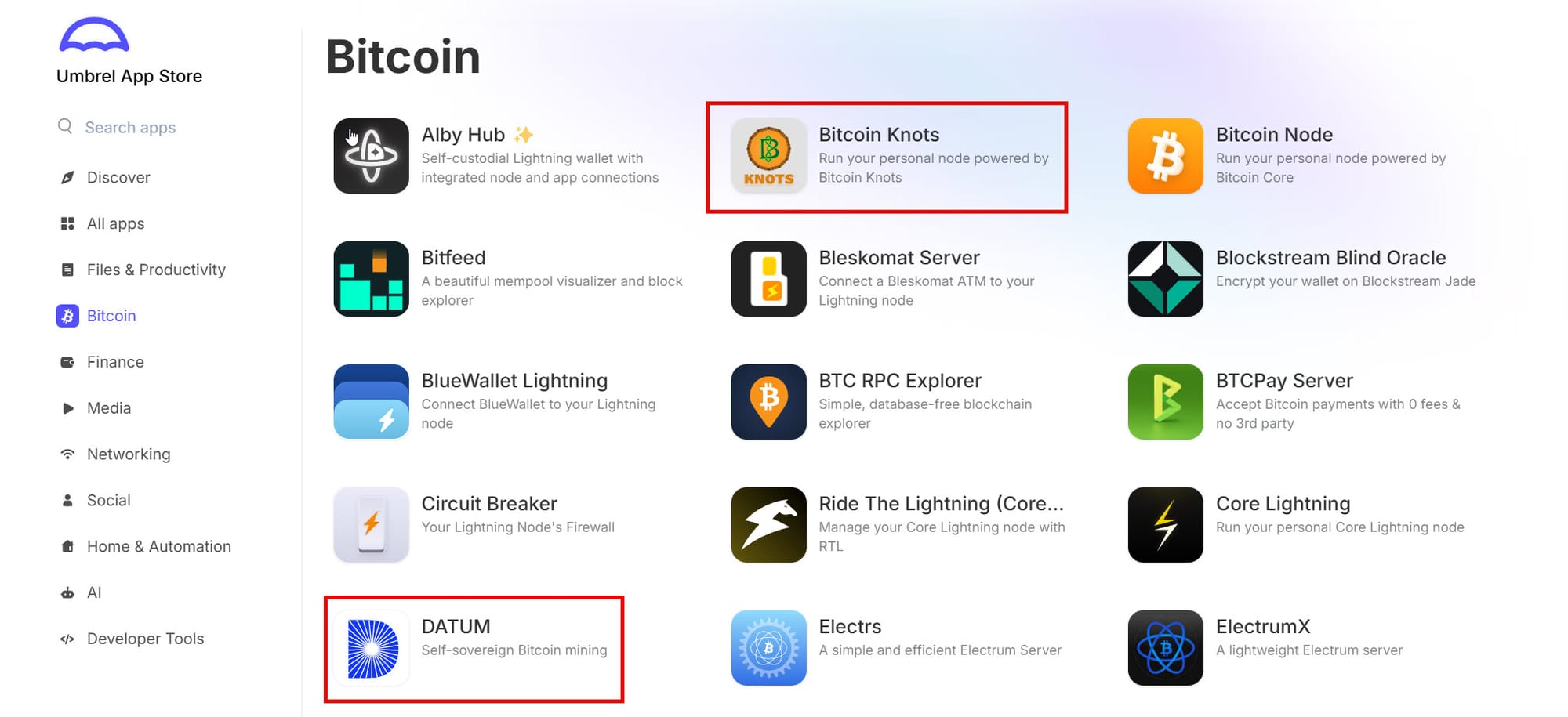
There is some deeply cool stuff in the Umbrel app store, including OpenWeb UI which gives you a chat app (that you can run in any browser on your network) with Ollama models like DeepSeek-R1 and LLama, or you can use an OpenAI API key. Pretty cool stuff and it's in the list as a thing to explore.
Install Bitcoin Knots
Install Bitcoin Knots - this is your BTC node. Like any node, it's going to need a few days to fully sync up.
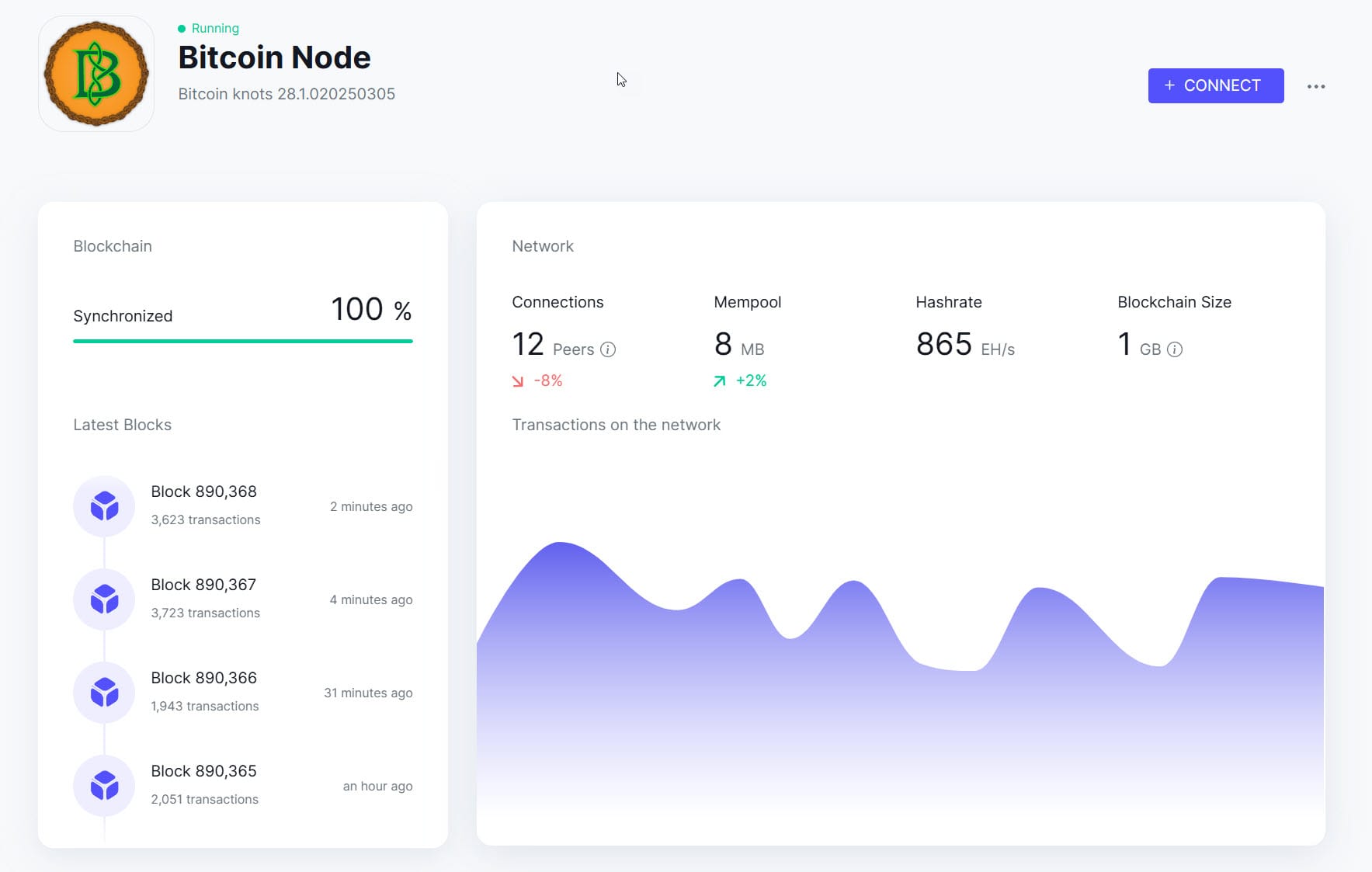
Just a really important thing to note. Your node will not accept shares until it is synced. So we can get everything set up and ready but it just won't work until the blockchain has synced.
As long as you have a decent SSD size (ideally 1TB) then all the default settings in Knots are good to use. To be a good citizen, you should open port 8333 and forward to the ip/hostname of your Umbrel machine:
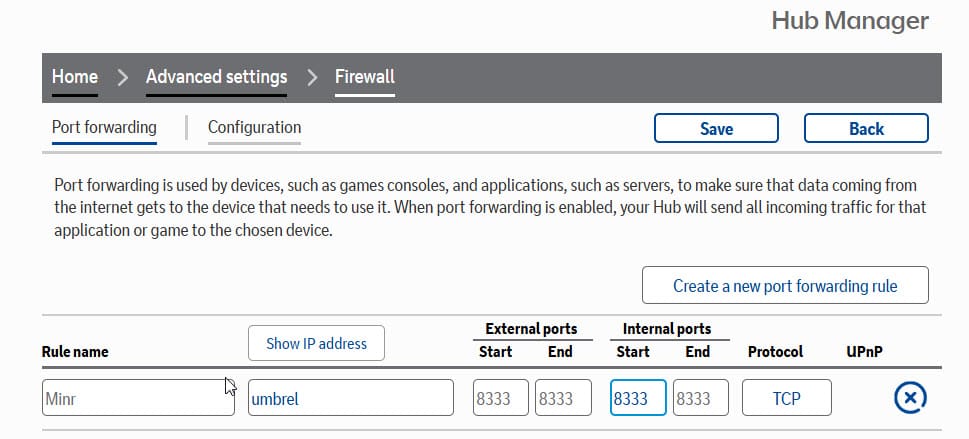
As I understand it, there's no disadvantage to a solo miner for not supporting other node peers but, democratisation and all of that. My node usually has 10-13 peers connected and hasn't caused any problems on the rest of my LAN.
While Bitcoin Knots is syncing, you can start to think about connecting your home miner(s) to your node. For this, you'll need DATUM, and the right local settings to mine to your node.
After installing DATUM Gateway from Umbrel's app store, you'll need to modify its configuration file to enable solo mining.
Configure DATUM for solo mining:
Step 1: Access Your Umbrel via SSH
First, you'll need to connect to your Umbrel node through SSH:
ssh umbrel@192.168.1.162If you're a Windows user, run CMD and paste that command. Replace the IP address with your Umbrel node's IP.
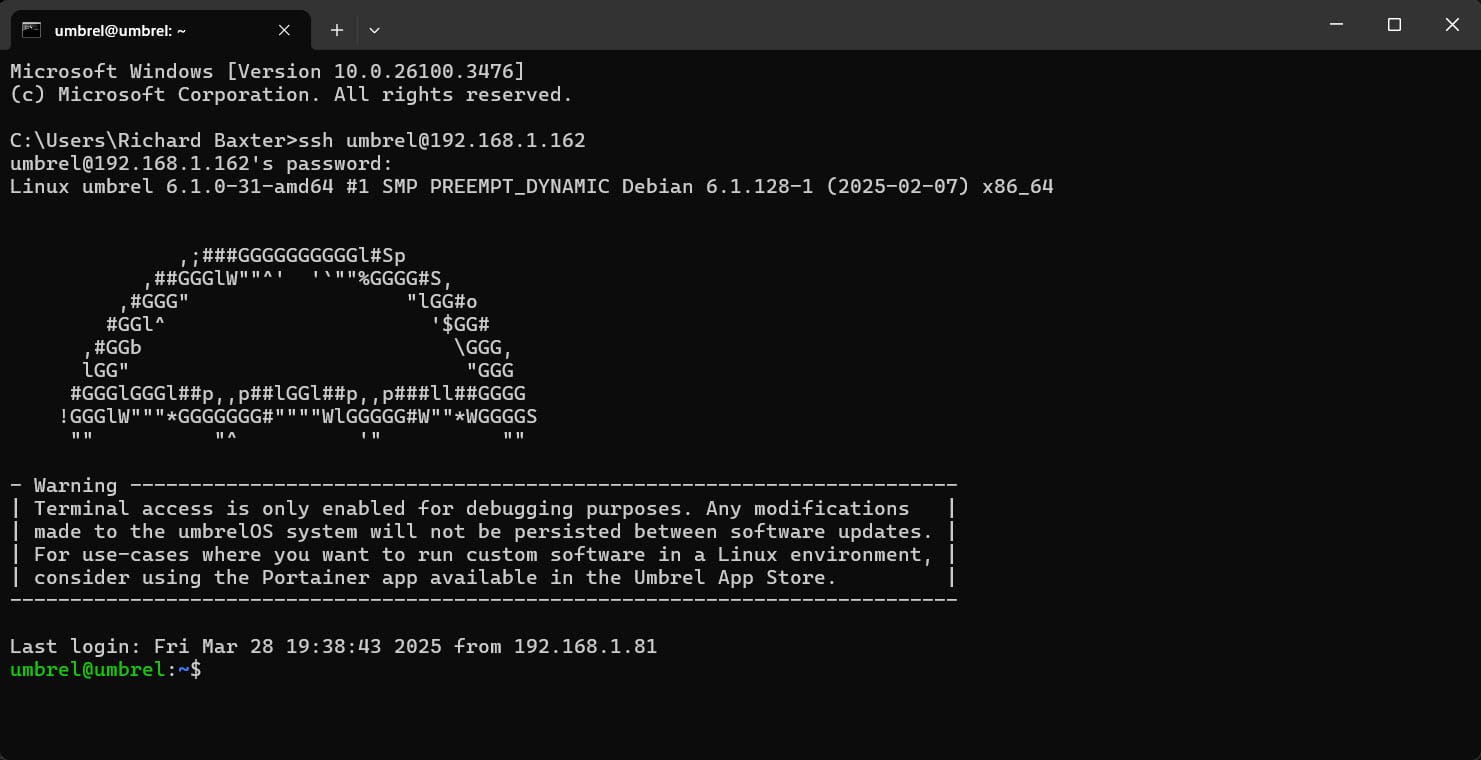
Step 2: Locate the Configuration File
Once connected, navigate to the DATUM Gateway configuration directory:
cd ~/umbrel/app-data/datum/data/settings/Step 3: Edit the Configuration File
Open the configuration file using the built-in text editor:
nano datum_gateway_config.jsonThis will open the config file shown below:
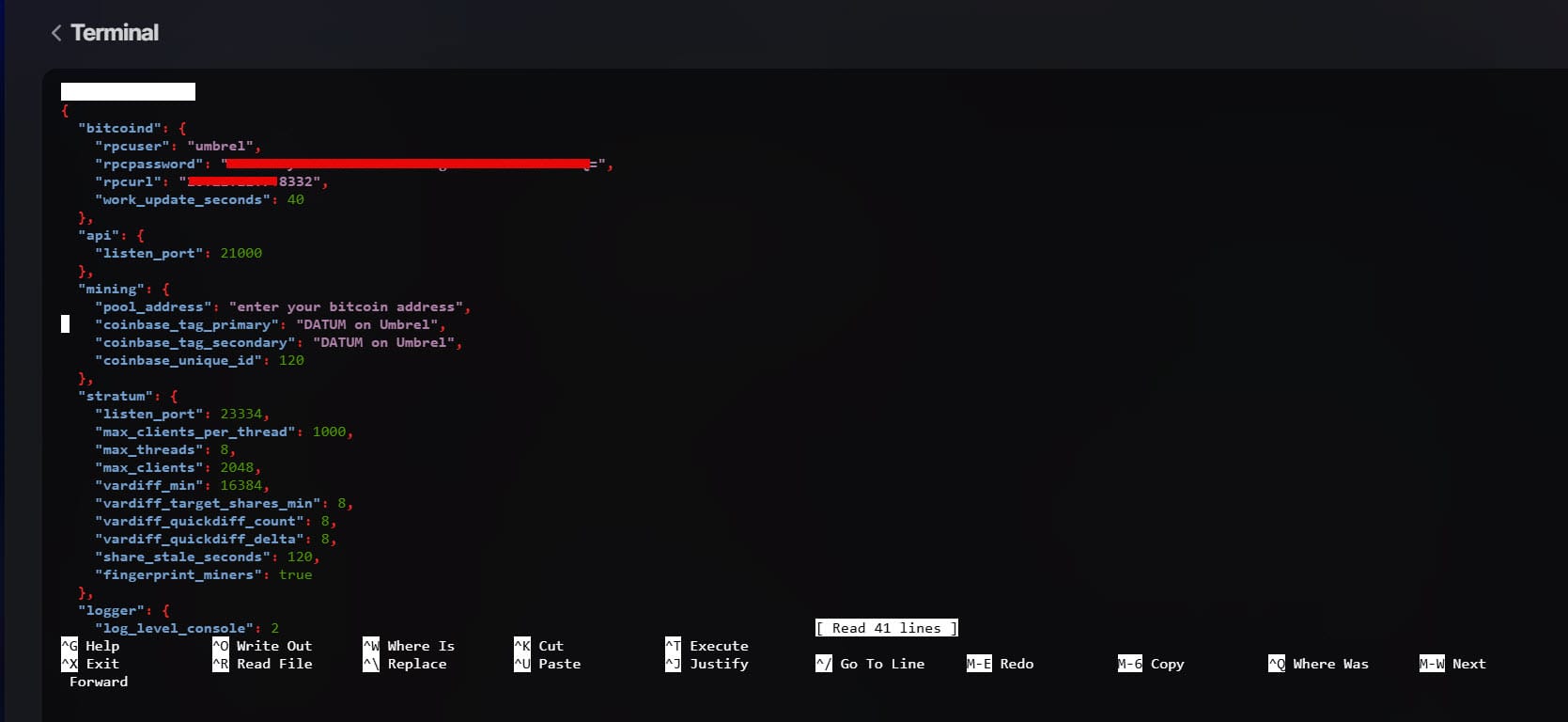
Step 4: Modify the Key Settings
You'll need to update several key sections of this JSON file:
- Bitcoin Address (Critical)
- Find the line:
"pool_address": "enter your bitcoin address" - Replace
"enter your bitcoin address"with your actual Bitcoin address
- Find the line:
- Coinbase Tags (Optional but Recommended)
- Find the lines for
"coinbase_tag_primary"and"coinbase_tag_secondary" - These can be set to anything you like, e.g.,
"DATUM on Umbrel" - These tags appear in blocks you find, like a signature
- Find the lines for
- Stratum Settings (Usually Leave Default)
- The
"listen_port": 23334setting determines which port your miners will connect to - The default of 23334 is typically fine
- The
- Solo Pool Settings (Critical for Solo Mining)
- Navigate to the bottom section labeled
"datum" - Find
"pooled_mining_only": trueand change it to"pooled_mining_only": false - Find
"pool_host": "datum-beta1.mine.ocean.xyz"and change it to"pool_host": ""
- Navigate to the bottom section labeled
Step 5: Save Your Changes
Once you've made these changes:
- Press
Ctrl+Oto write the file - Press
Enterto confirm the filename - Press
Ctrl+Xto exit the editor
Step 6: Restart DATUM Gateway
For your changes to take effect, restart the DATUM service:
cd ~/umbrel
docker-compose restart datumStep 7: Verify Your Settings
After restarting, wait a minute or two for the service to initialize, then check if it's running:
- Open your browser and navigate toUmbrel and open the DATUM app or find DATUM at
http://umbrel:21000orhttp://192.168.1.162:21000 - Check the Status page to confirm it shows "Non-Pooled Mode"
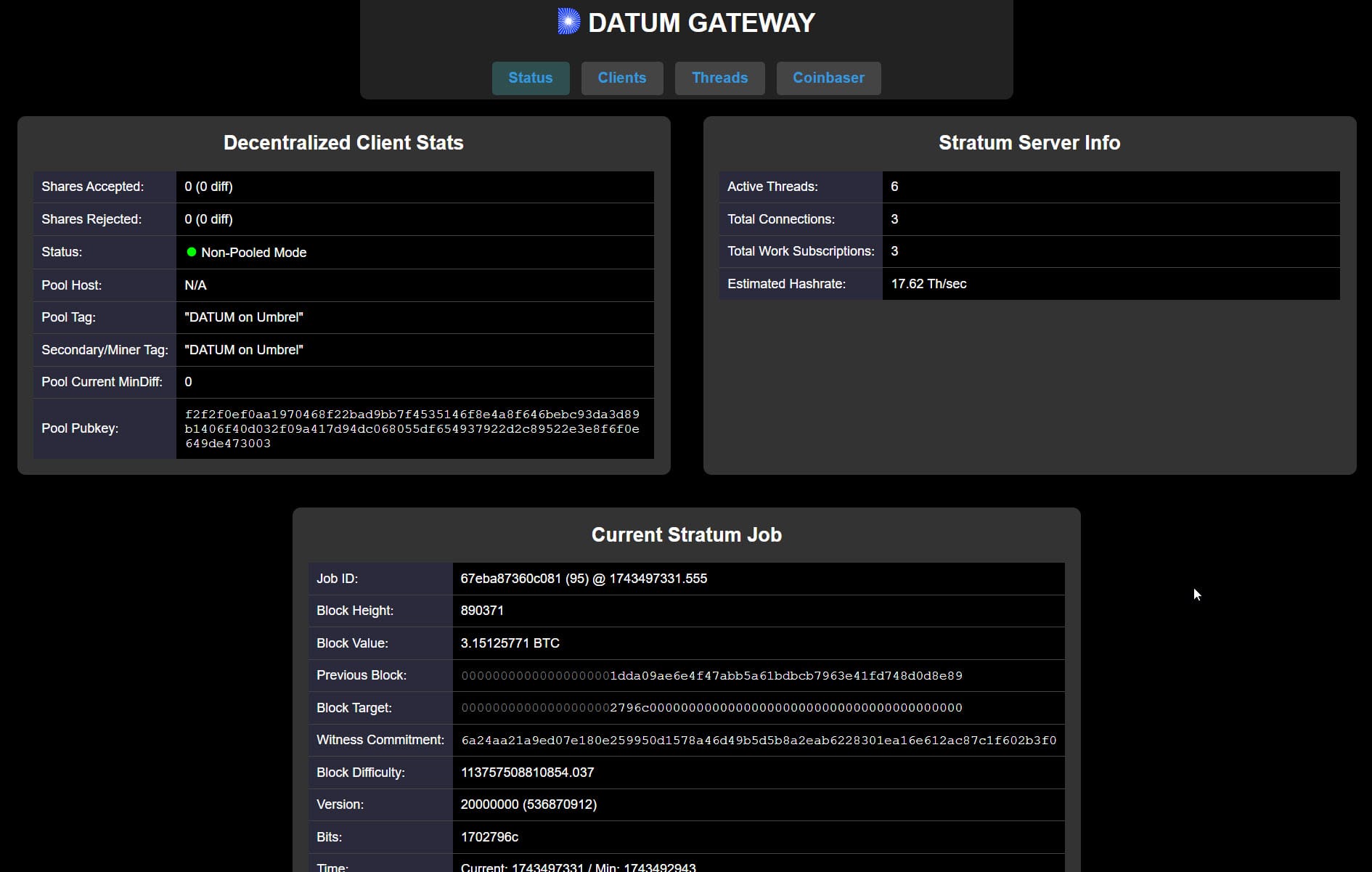
At this point I'll remind you of that massive caveat - unless Knots has synchronised the blockchain your node will sit there appearing to do nothing. As soon as the node is synchronised, it should just start to work.
This is, of course, why we use fallback pools while we're doing such important work!
Miner Settings
Here are the settings from my SupraHex:
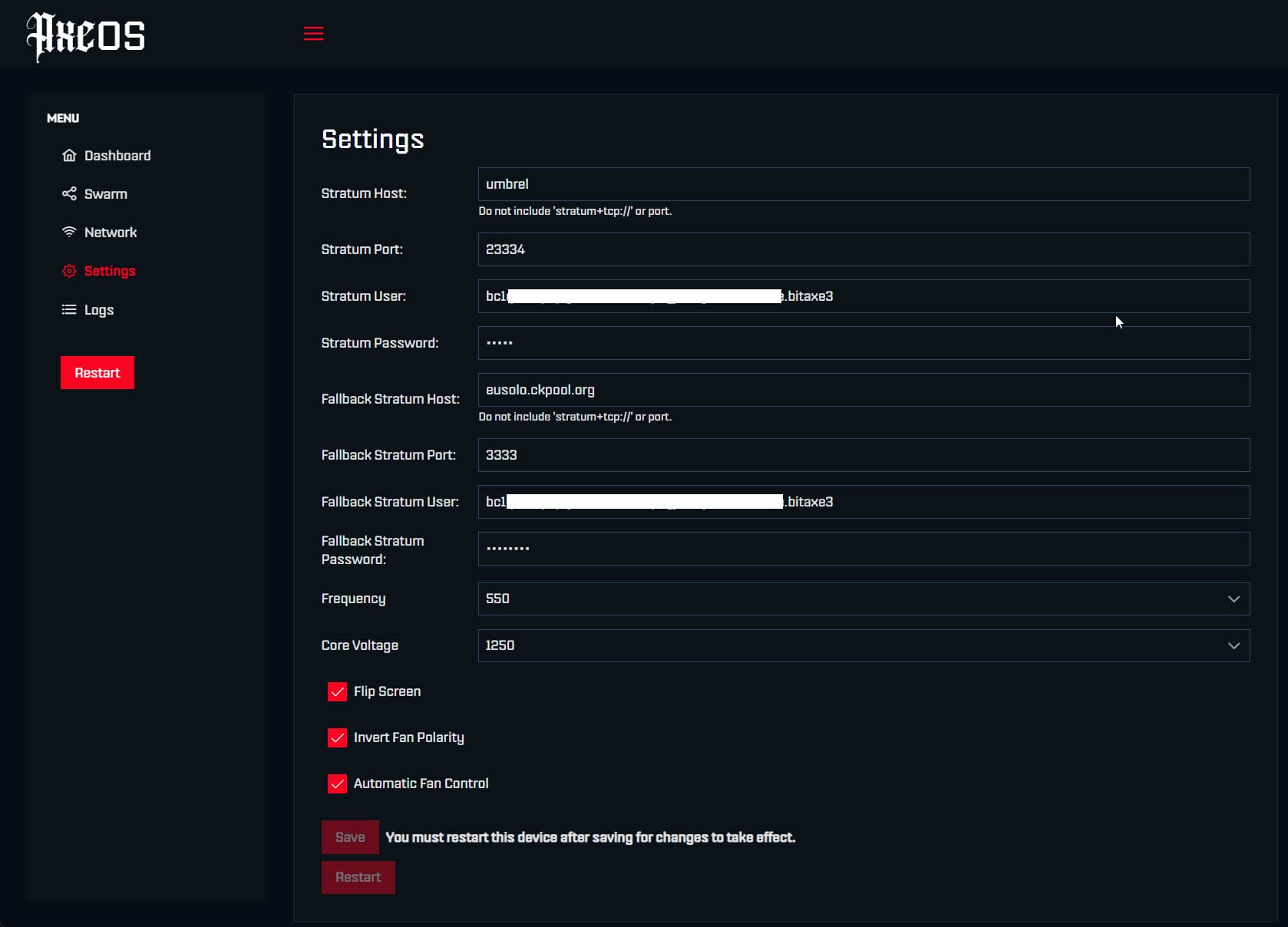
As you can see, my settings are simple:
Stratum Host: umbrel
Stratum Port: 23334
Stratum User: [BTC-Address].user
Stratum Password: xMining Solo
I think this should be enough to make it easy for you to do the same. I bought a HP Elitedesk from eBay, for around £100. It has an i5 CPU in it, 16gB of ram and a 1TB SSD. I think that's about as good a deal as it gets.
The machine itself is not on the wifi network, it's on my LAN which I prefer. It's faster!
I learned a huge amount in this small weekend project and if you're a solo miner, I recommend running a node could be part of your setup.
Enjoy!